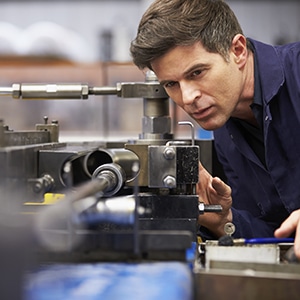What Change Takes Place When A Liquid Absorbs Heat Energy Without Increasing Its Temperature?
Phase Modify Technology
Stage Change Technology utilizes the Latent Heat of Vaporization of a working fluid to blot thermal free energy during the evaporator cycle and release this energy during the condenser cycle.
Phase Change Defined
Transitions between solid, liquid, and gaseous phases of a material. Typically involving large amounts of free energy compared to the specific oestrus.
Heat
Oestrus may exist divers every bit energy in transit from a high temperature object to a lower temperature object. An object does not possess "heat"; the advisable term for the microscopic energy in an object is internal energy. The internal free energy may be increased by transferring free energy to the object from a higher temperature (hotter) object – this is properly called heating.
Specific Heat
The specific heat is the amount of oestrus per unit of measurement mass required to enhance the temperature by one degree Celsius. The relationship between estrus and temperature change is usually expressed in the grade shown below where c is the specific heat.
Q= cm DeltaT
Where:
- Q = Heat Added
- c = Specific Heat
- chiliad = Mass
- DeltaT = Change in Temperature
The specific rut of water is 1 calorie/gram °C = iv.186 joule/gram °C which is higher than any other mutual substance. As a event, water plays a very important part in temperature regulation. The specific rut per gram for water is much higher than that for a metallic.
This relationship does not utilize if a phase change is encountered, because the heat added or removed during a phase change does not change the temperature.
Latent Oestrus
The expression latent heat refers to the amount of energy released or absorbed by a chemical substance during a change of state that occurs without irresolute its temperature, meaning a phase transition such as the melting of ice or the humid of water.
Latent Heat of Fusion
Course of latent heat where energy period during the change of stage is from solid to liquid. The alter is endothermic, meaning that the arrangement absorbs free energy on going from solid to liquid. The alter is exothermic (the system releases free energy) when the direction is from liquid to solid.
Latent Heat of Vaporization
Form of latent heat where energy flow during the change of phase is from liquid to a gas. The alter is endothermic, significant that the arrangement absorbs energy on going from liquid to gas. The change is exothermic (the arrangement releases energy) when the direction is from gas to liquid.
Specific Latent Oestrus of Fusion
The corporeality of energy required to convert one kg (or i lb) of a substance from solid to liquid (or vice-versa) without a change in the temperature of the surroundings – all absorbed free energy goes into the phase modify.
Specific Latent Oestrus of Vaporization
The amount of energy required to catechumen ane kg (or 1 lb) of a substance from liquid to gas (or vice-versa) without a change in the temperature of the surroundings – all absorbed energy goes into the phase alter.
Table of Latent Heats
The following tabular array shows the latent heats and alter of phase temperatures of some common fluids and gases.
| Substance | Latent Heat | Melting | Latent Estrus | Humid |
| Alcohol, ethyl | 108 | −114 | 855 | 78.three |
| Ammonia | 339 | −75 | 1369 | −33.34 |
| Hydrogen(2) | 58 | −259 | 455 | −253 |
| Atomic number 82[3] | 24.v | 327.5 | 871 | 1750 |
| Nitrogen | 25.7 | −210 | 200 | −196 |
| Oxygen | 13.ix | −219 | 213 | −183 |
| R134a | −101 | 215.9 | −26.vi | |
| Toluene | −93 | 351 | 110.6 | |
| Water | 334 | 0 | 2260 (at 100oC) | 100 |
Have Questions? We're Set to Aid!
Contact Us

Products
Noren thermal solutions are designed to cool overheating electronics in a variety of industries and applications. Check out our PRODUCTS section for more information.

Noren Product's Blog
Get the latest and greatest company and industry news.
Source: https://norenthermal.com/resources/phase-change-technology/
Posted by: ballardloffinds.blogspot.com


0 Response to "What Change Takes Place When A Liquid Absorbs Heat Energy Without Increasing Its Temperature?"
Post a Comment